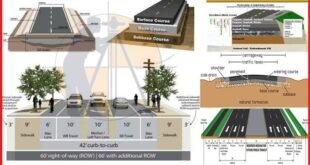Diaphragm Retaining Walls
Diaphragm Wall is a deep reinforced concrete continuous retaining or cut off structure often used as permanent works on a project. Typical applications include station boxes, underpasses, tunnel portals open cut and cover tunnels. They are particularly suitable for large open sites where structures greater than 25 m deep are required and they can be constructed in the most ground conditions.

HOW IT WORKS
A diaphragm wall is normally constructed in panels ranging in length from 2.8 m to 7.0 m using purpose built hydraulically or rope operated grabs mounted on a base crane. The grab is used to excavate the panel which is filled with bentonite or polymer to support the open panel as it advances.
In certain circumstances Hydro fraise is used. The Hydro fraise uses two counter rotating drums at the base of a frame suspended from a crane to cut the ground. The spoil is removed via a pump which pumps the spoil back to a de-sanding unit. It is used for the construction of diaphragm walls in difficult conditions: excavation of rock and hard layers of soil, deep panels and where strict construction tolerances are required.
A reinforced concrete guide wall is constructed at platform level to assist excavation and to maintain the plan position and verticality. The excavation is stabilized by using support fluid, normally bentonite slurry or polymer if suitable for the ground conditions.
Learn More.
-
How Many Types Of Septic Tanks Based On Materials
-
How To Estimate Per Meter Weight Of Reinforcing Steel Bar
-
How To Calculate The Cutting Length Of Circular Stirrup
Purpose made stop ends are used to form watertight joints between the panels by incorporating vertical water bars. Once a panel is excavated, support fluid cleaned (the physical and chemical properties of the slurry are monitored) and stop ends installed (including water bar) a pre-fabricated reinforced steel cage is lowered into the excavation. Concrete is then poured (displacing the support fluid) in one uninterrupted operation through one or more tremie pipes starting at the toe of the panel – the tremie pipes are withdrawn to the surface during concreting but are always embedded in the fresh concrete.
Learn More
Precautions to be Taken While Placing of Concrete | Do’s & Don’ts While Concreting
Standard widths of panels are 600, 800, 1000, 1200, 1500 and 1800 mm and typical depths for a wall constructed by a grab is 50 m and up to 100 m using a Hydro fraise. The slurry support fluid remains in place during the installation of the steel cages and extracted as each panel is concreted. The slurry support fluid requires controlled use of specialist de-sanding, desilting.
The desanding plant must be sized to match the panel volume and number of rigs and planned production rate. The bentonite or polymer needs to be stored in tanks (or lagoons if the site is large enough to accommodate) to store both freshly made fluid and digging fluid when it is pumped back to the plant when the concrete poured into the completed panel. The de sanding plant will contain various equipment to clean the fluid which may include & centrifuge equipment if the ground contains silts.
Capability
Depending upon ground conditions, we are able to construct diaphragm walls to a depth of 100 m, with a thickness between 800 mm to 1800 mm.
Advantages
Provide rigid cost effective solutions for permanent (or temporary) retaining walls and shafts, with less construction joints than bored pile walls. They are particularly suitable for large, more open sites where structures greater than 25m deep are required, greater verticality tolerances (typically 1:200) in comparison to C.F.A and L.D.A piling, ideal for water bearing ground can incorporate floor slab connection and recessed form-work into walls & can introduce tangible program benefits in top-down construction.
Get Benefits And Share With Others.
Learn More.
-
How to calculate the number of bricks in 1 CFT wall.
-
How to Calculate the Cost of Paint for one Room
-
How To Calculate The Cement Bags Required For 2000 sq. ft. House
 Surveying & Architects A unique platform of Civil Engineering
Surveying & Architects A unique platform of Civil Engineering
